California Drought is No Problem for Kern County Oil Producers
Farmers do without water while oil producers use what they want.
By Jeremy Miller
Circle of Blue
Curtis Creel is keen on saving water. He is the water resource manager for the Kern Water Agency, one of 29 agencies that hold water contracts with the California Department of Water Resources, the agency responsible for delivering water across California by way of the State Water Project, a latticework of aqueducts, canals and reservoirs high in the Sierra Nevada.
“Do you know how much water it takes to grow an apple?” asked Creel.
“15 gallons.”
“Know how much it takes to grow a melon? A single melon?” he asked.
“100 gallons.”
Creel has good reason to be informed about such things. The Kern County Water Agency is one of the largest contract holders for water from the California Aqueduct, a great river of concrete that brings water from the Sacramento-San Joaquin Delta, east of San Francisco, to his doorstep. His agency distributes water to 13 “member units” in Kern County, which, in turn, sell that water to an array of interests, from municipal drinking water supplies to industrial firms.
Farming accounts for the lions’ share of water use in Kern County and 88 percent of the water distributed by the Kern County Water Agency, according to Creel. This is not surprising when one looks at a map of the San Joaquin Valley. In spite of the valley’s desert conditions, the region has been transformed by these massive irrigation projects into a Cartesian gridwork of farms. Today, irrigated farmland and grazing pastures account for more than half of Kern County’s 8,100 square miles.
But there is another big water user in Kern County – the oil industry. In spite of the dwindling production from its aging oilfields, Kern County still accounts for 10 percent of U.S. domestic oil production. While occupying a far smaller land footprint than the county’s agricultural users, the Kern County oil industry consumes a staggering volume of water. According to the California Division of Oil, Gas and Geothermal Resources, Kern County oil companies injected 1.3 billion barrels of water and steam into the ground in order to produce 162 million barrels of oil a year.
Surprisingly, Creel had no idea that producing a single barrel of Kern County crude oil (which is to say getting it out of the ground) requires 320 gallons of water.
This is merely the beginning of the oil supply chain. The United States Geological Survey estimates that the lifecycle requirements of extracting, transporting and refining a single barrel of oil – which yields over 40 gallons of various petroleum products – requires 1,850 gallons of water.
More surprising, perhaps, is that much of the water used by Kern oil companies to extract 550,000 barrels of crude oil a day comes from the same source that farmers get it: California’s network of irrigation projects.
While a severe drought wracked the state, and agricultural and environmental groups wrangled over water shipments to the arid San Joaquin Valley, the oil industry received 8.4 billion gallons a year—as much water as it needed—from the web of aqueducts and canals that carry water from rivers and reservoirs high in the Sierra Nevada. The industry uses that water to produce $14.5 billion worth of crude a year. It’s enough to irrigate 8,000 to 9,000 acres of row crops, vineyards and orchards. In a dry year, every gallon that goes to the oil companies is a gallon taken from Kern’s farm fields, resulting in shrinking irrigated acreage.
Over the last four weeks, in its Choke Point: U.S. series, Circle of Blue has reported on the uneven contest that pits the nation’s rising energy demand and production against the diminishing supply of fresh water. No sector of the economy, except agriculture, uses more water than the energy industry.
Energy Production Paramount Value
New reserves of natural gas held in deep shale miles beneath the surface, much of it in the arid Rocky Mountain West, require 3 million to 8 million gallons of fresh water per well to fracture the rock and release the gas. The mining and combustion of coal in thermal power plants accounts for half of the 400 billion gallons of water withdrawn daily from U.S. rivers, lakes and aquifers. Oil production from the tar sands of northern Alberta, Canada requires four barrels of water for every barrel of synthetic crude that is shipped to the United States, or roughly 48 billion gallons of water annually. Refining oil into transportation fuels and other products takes one to two more barrels of water for every barrel of finished gasoline or diesel, or more than 340 billion gallons of water a year, according to the U.S. Geological Survey.
In every sector that Circle of Blue has examined energy production is the paramount value, superseding water supply and water quality. Moreover, Circle of Blue has found that the mismatch that defines the place where energy and water intersect also applies to how the energy industry is treated by government authorities. All other economic sectors come second.
Dry Farm Fields
In the competition between rising energy demand and diminishing freshwater resources in California, there are few more vivid examples of this systemic mismatch than farm and oil production in Kern County.
Kern County’s irrigated farms this year are receiving, under the latest supply agreement, less than half of the water they normally use. Last year, during the third straight year of drought, leaders of the federal Central Valley Project and the State Water Project—the two big government-owned and managed supply networks—considered slashing water allotments to farms to 5 percent of the normal supply. Kern County farm sales dropped to $3.6 billion in 2009, more than 10 percent below the $4 billion in annual farm gate sales producers earned in 2007.
Tens-of-thousands of acres of farmland lie bone dry and fallow. One sign along Highway 33, which cuts through the county’s west side, is set dramatically in a parcel of farmland with topsoil reduced to sand. It says “FOOD GROWS WHERE WATER FLOWS.” In anticipation of severe shortages, several farms on the agricultural roads between Bakersfield, the county seat, and the oil town of Taft on the west side of the valley, were in the process of uprooting large poplars and cottonwoods along their property lines—a last ditch effort to save small, but precious quantities of water.
The same water rationing does not apply to Kern County’s oil industry, which has proven virtually drought resistant. Since California oil production peaked in the mid-1970s, the curve of the decline has been smooth and predictable. For instance, there were no steep drop-offs in production in 1993, one of the driest years on record in California. That year, the Kern Water Agency, which distributes water to farms and industry, received only 10 percent of its overall allocation from the State Water Project. Yet oil production dipped by a mere 4 percent from the previous year, which was in line with the overall trend.
Water-Rich Oil Production
Oil industry executives explain that the distinctive oil-bearing reserves they work with can only be tapped using huge amounts of water. What’s unusual, given all of the competing interests, especially Kern County’s wealthy and well-connected growers, is how easily the oil industry commands the water supply it needs and how readily everybody else concedes their primacy.
For more than a century, major oil companies and smaller operators have been drilling the arid southwestern corner of the San Joaquin Valley near Bakersfield in pursuit of the region’s molasses-like crude, known as “heavy oil.”
The tarry oil of Kern County is so resistant to moving through pipes that the first oil prospectors who came to the region in the late 1800s mined it by digging shafts and shallow tunnels in the sagebrush-covered hillsides and then bailed it from the ground with buckets. While the San Joaquin Valley’s stubborn oil has long been a reliable commodity, fresh water has proven a far scarcer resource. According to historian William Rintoul, at the turn of the century water had to be hauled to the oil boomtown of Taft by rail from Bakersfield and was sold for a nickel a glass in local saloons.
“When anyone tried to bore a well for water in that vicinity they always struck oil,” an early settler in the region told Rintoul.
Steam Moves Oil
So it was a Faustian bargain indeed, when, in the 1960s, Royal Dutch Shell discovered that heating water to steam was the best way to get Kern County’s lazy oil out of the ground. Known as steamflooding, the process entails injecting large volumes of water and steam underground to heat the surrounding rock and sand.
The heat turns the immobile heavy oil into a thinner liquid that can flow to spaces 900 to 1,500 feet underground, reachable by pumping units—known as “nodding donkeys”—that lift it to the surface. Production is so intensive in parts of the Midway-Sunset Field west of Bakersfield that the pump jacks swarm over the dry landscape like robotic insects, their hammer-shaped heads levering over wells drilled less than 150 feet apart.
It is no overstatement to say that water is the key that has unlocked Kern County’s heavy oil and kept it flowing. Over the last 50 years, according to the California Division of Oil, Gas and Geothermal Resources, oil companies have produced more than three billion barrels of oil. They’ve also pumped 2.9 trillion gallons of steam and water into the ground—a volume large enough to submerge the state of Maryland in one foot of water.
The massive energy and water requirements of producing steam to get the oil out of these fields are exemplified by the dozen or so natural gas-fired “co-generation” power plants that stand amid the wells, many of which are owned and operated by oil companies. Some are small, generating only a few megawatts or so, but others crank out hundreds of megawatts, such as the Midway-Sunset Cogeneration Company plant located near the hardscrabble oil field town of McKittrick.
As with ordinary utilities, the “surplus” electricity generated, the portion unused for oil extraction, is distributed to the power grid and sold to ratepayers. But a secondary function of this electricity generation is to produce steam and distribute it to the oil fields. Branching networks of silver pipes run from the plants, diverging into increasingly smaller diameter pipes, eventually terminating at thousands of heavy oil wells drilled across the region. Every time ratepayers in central California, who are served by these utilities, flip a light switch, or turn on the television, they are in essence underwriting heavy oil production in Kern County.
Water in Quantity For Oil Production
The amount of water needed in heavy oil production is eye-popping. In 2008, just over 162 million barrels of oil were produced in District 4, which comprises Kern County, by far the state’s largest oil producing region. In the same year, 1.3 billion barrels of water and steam – 54.6 billion gallons – were injected into the ground to get it. That translates to roughly eight barrels of water injected for every barrel of oil extracted.
For years the industry has been able to avoid careful scrutiny of its water footprint because the California Division of Oil, Gas and Hydrothermal Resources—the agency that oversees the California oil industry—does not require oil companies to disclose the sources from which their water is obtained. Nor does the agency require oil companies to report exactly where their wastewater is going.
As a result, the task of tracing one barrel of water through the heavy oil fields of Kern County is like interpreting the workings of an enormously complicated black box. Lots of water goes into the system. Lots of water comes out. But where is all of it coming from? And where does it end up after it has been used?
There seems to be a logical answer to the first question: As oil fields age and production falls off, the wells generate ever larger volumes of water. This fluid, known in the industry as “produced water,” accounts for the lion’s share of the Kern County oil industry’s waste stream—and, for that matter, the waste stream of the industry worldwide, which generates an estimated two trillion gallons of produced water annually.
Chevron Corp. reached agreement with farmers in 1994 to treat and recycle some of the waste water from its Kern River field to irrigate crops in the county’s Cawelo Water District. But that agreement is distinctive in the region because the level of impurities in the produced water from the Kern River field are unusually low.
In contrast, produced water from the west side of Kern County, near Taft, is ultra-saline brine that is poisonous, heavily laden with salts—sulfates, chlorides and carbonates—that are found deep in the deposits. In addition, other inorganic materials, heavy metals, residual hydrocarbons and radiation are also found in varying concentrations in produced water.
Produced Water Produces Huge Contamination
Most produced water can’t be recycled for steam flooding unless these salts and other impurities are first removed, says Jim Waldron, a Chevron spokesperson. If they are not, solids may corrode the tips of steam injectors and clog the wells themselves. In order to remove the impurities, water treatment facilities are needed.
Oil company executives will not disclose specifics on how much produced water is recycled for use in Kern County steamflood operations. Nor are they required to by state regulators. “Companies don’t really want to get into disclosing those numbers,” said Tupper Hull, a spokesperson for the Western States Petroleum Association, a trade association. “It’s a proprietary issue.”
It’s also clearly a financial issue. These facilities are expensive to build, operate and maintain. And for this reason, much of the produced water—particularly the most polluted—is discarded, pumped into underground disposal wells and dozens of large evaporation ponds strewn across Kern County. In 2008, according to the California Division of Oil, Gas and Geothermal Resources, the oil industry discarded 425 million barrels of produced water into underground disposal wells, and an additional 188 million barrels into evaporation ponds across Kern County. In other words, here in the land of persistent water shortage, roughly half of all the water generated from oil production in Kern County in 2008 was discarded.
“It’s all a matter of dollars and cents,” said Matt Trask, a California energy consultant and former power plant operator. Trask says that a rule of thumb is that the cost of treating a barrel of produced water is typically three to five times higher than buying a barrel of fresh water from Kern County distributors.
“It varies quite a bit,” he said. “But in cases where the water is very dirty or you need very pure water, it can be as much as 10 times as expensive.”
Though the Clean Water Act does not apply to so-called “non-navigable” waterways such as evaporation ponds, the state water board claims to be phasing them out. According to Clay Rodgers, an officer at the Regional Water Quality Control Board, the number of evaporation ponds is down from thousands in the mid-1980s. Yet, hundreds remain in use across the county. In addition to threats posed to waterfowl and other animals attracted to their surfaces, the ponds often contain quantities of hydrocarbons and methane and contribute to climate change.
Evaporation ponds have also caused extensive contamination to local aquifers. At Starrh Farms’ 9000-acre almond and pistachio orchard in the Lost Hills District, northwest of Bakersfield, boron and radiation from produced water has leached into the aquifer. The contamination came from evaporation ponds operated by Aera Energy—a joint venture between Shell and Exxon Mobil Corp.—which for 25 years dumped wastewater from its operations in the North Belridge field into gouged basins occupying a footprint of hundreds of acres. A tract of ashen gray dead almond trees stood in stark repose against the massive earthen berms of the pond.
According to owner Fred Starrh, when the Aera ponds were in use the berms were constantly wet—a clear sign that produced water was leaching through the walls of the unlined reservoirs. Almond trees, said Starrh, have a tolerance level for boron of about one part per million. “When we tested the ponds we found that the levels were between 50 and 100 parts per million,” said Starrh. “Boron is just a tough dude. You put five or 10 parts per million on these trees and it’ll kill them deader than a doornail. And once it’s in the soil it’s awful hard to flush out.”
Oil industry engineers and water quality specialists say it is technically feasible to treat and recycle all of the produced water, and use it for steam flooding. There is so much produced water that such a closed loop treatment and recycling system could supply one-and-a-half times the amount of water needed for all of the industry’s steamflood operations. Yet state regulators have have not forced the industry to make such changes, allowing them instead to externalize costs by dumping wastewater and contracting for cheaper water from the state’s irrigation systems.
No Treatment, Buy Fresh
Despite earning record profits, though, the higher costs of treatment and recycling have prompted the oil companies to contract for fresh water with local districts, such as the West Kern Water District, which distributes water from the state’s irrigation projects to users on the west side of the San Joaquin Valley.
Oil companies call the water they buy “makeup water.” It arrives in the oilfields through the Central Valley and State Water Projects. No one from the California Division of Oil, Gas and Geothermal Resources keeps tabs on how much of the water injected by oil companies comes from outside sources, according to Randy Adams, district deputy for the oil and gas division.
Similarly, the California Department of Water Resources, the state oversight agency, does not track how much makeup water is delivered to oil companies through the State Water Project.
But J.D. Bramlet, the director of operations of the West Kern Water District, knows how much of this makeup water his district sells to oil companies and co-generation plants on the west side of the San Joaquin Valley. “They get most of it, about 83 percent,” he said. That is, oil companies hold contracts for about 26,145 acre-feet of West Kern’s 31,500-acre-foot allocation. An acre-foot, 326,000 gallons, is the volume that would cover an acre of land in water one foot deep and is enough water to supply two families of three with their water needs for a year.
In other words, the petroleum industry on the west side of the valley siphons off about 200 million barrels—or 8.4 billion gallons—of water annually from the California Aqueduct and the Central Valley’s other water conveyance canals. The large players—Chevron, Aera Energy, Occidental, Berry Petroleum—along with smaller oil companies monopolize enough water through the West Kern Water District alone to supply roughly 80,000 people with their water needs for an entire year.
Not only has the oil industry effectively tapped the region’s taxpayer—financed plumbing—it gets all the water it needs from West Kern, even in times of extreme scarcity. “It could mean we’ve got to go out and work a trade or pay someone a higher rate for water. But the contract holders pay an established rate,” Bramlet said.
But are such schemes defensible when oil companies dispose of hundreds of billions of gallons of contaminated water annually—and at a time when hundreds of thousands of acres of farmland lay fallow because of water shortages, and two million Californians have no access to reliable, clean drinking water?
The pump jacks seem to answer the question. Their heads nod in robotic affirmation of the wasteful interplay of water and oil in Kern County. The steam goes in, the oil comes up, farmers fields go dry and the public is left to bear the uncalculated and ever increasing costs of the tainted water that rises to the surface.
Jeremy Miller is a New York-based writer. He was a 2009-2010 Middlebury Fellow in Environmental Journalism. Reach him at jjmiller11@optonline.net.

Circle of Blue provides relevant, reliable, and actionable on-the-ground information about the world’s resource crises.

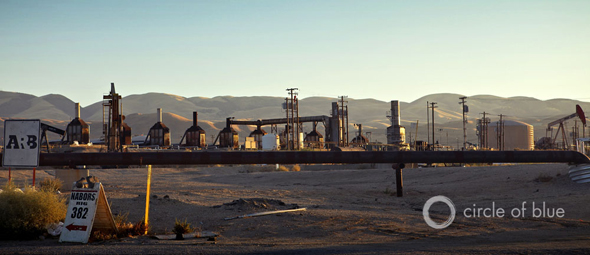
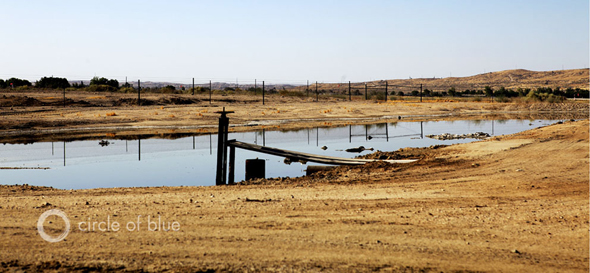
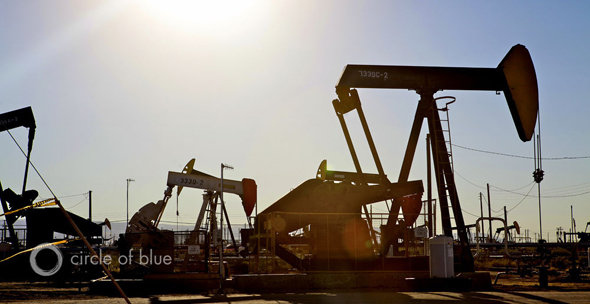
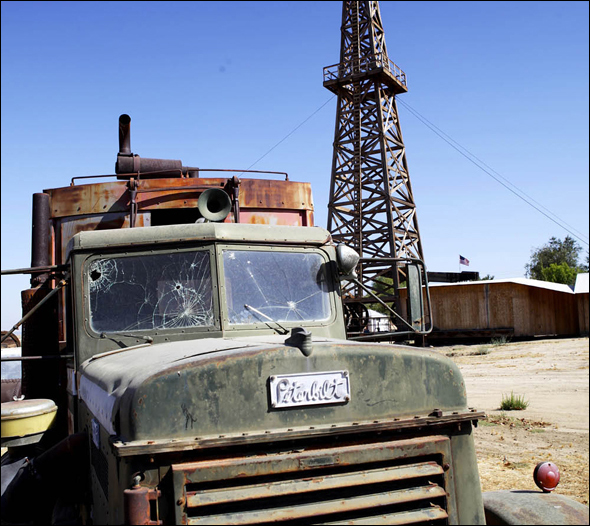
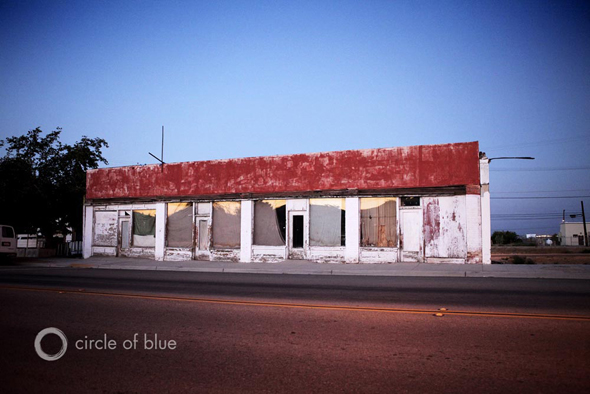
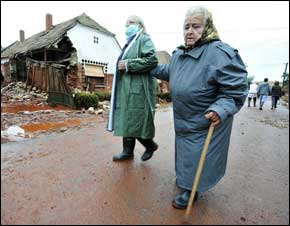
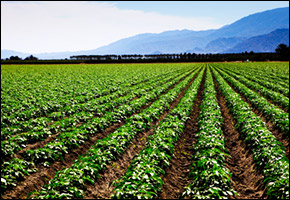

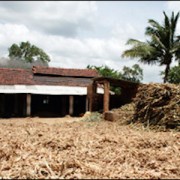
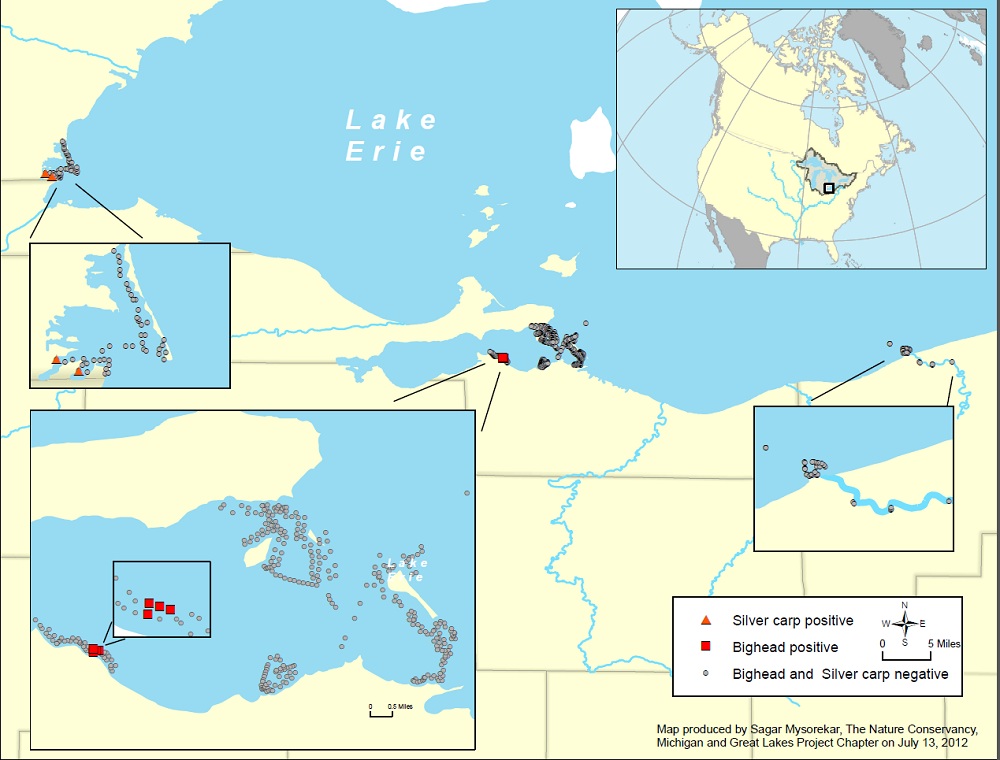


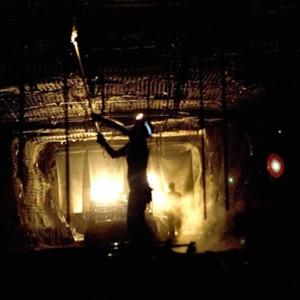

Thanks Circle of Blue
Well researched presentation of our historic use of fresh water. I has been taken for granted, for too long.
Is there every a right time or place to say the following….new approaches to fresh water use which affects the…Good, the Corrupt and the 4th Vow Jesuits working for the Black Pope;
As we know all electronic voting, emails, communications can be intercepted and made invisible, if so desired.
As the Al Gore vs G. Bush election corruption over 12 years ago in the US.
I am aware that the current industrial leaders (4th vow Jesuits) have not be given the OK from the Black Pope, to permit this OUR new approach of providing Clean Drinking Water for you ALL.
Hence my invisible votes are not being recorded. Many of you would not know this!
I am not blaming Ecomagination or GE for this very interesting adventure.
You should all know that you are all made of 75% Water; HOW CLEAN OR POLLUTED IS THAT WATER?.
The savings to be made by not transporting plastic filled bottles with water globally would save this planet more Smart Energy than any other CONCEPT on this website. never mind the vast amounts of oil (17 million barrels us ANNALLY) used to produced the plastic LANDFILL & ocean problem.
I happily see the false praise to crazy ideas….long my it reign, in a world of corrupt, warmongers and weak politicians.
There really are NO independent philanthropists.
So enjoy this Smart Challenge….I remain honest and wiser for the learning!
Thank You
We are a company that monitors potable water in Kern County and, in researching how oil fields monitor watèr quality, stumbled across this info. Amazing! Something must change!
One statistic was missing. How little an amount of oil can pollute a million gallons of clean water? The answer is less than 1 gallon of oil. Produced water is a disaster for aquifers. Californians need to decide whether we want to eat or drive cars. Once the aquifers are polluted and the ground contaminated with produced water, all that California will have left is a desert.
This footprint is nothing compared to the water crimes of Los Angeles and San Diego. Those entire communities should be relocated. They are still claiming that their water theft from the Colorado River, Owens Valley, and the California Aqueduct is for agriculture production. What agriculture production? These two communities have enough natural water to supply maybe 1 million people yet they let well over 20 million people reside there. They have been responsible for creating vast deserts where their was once fertile ground. Talk about pollution. These places are cesspools in and of themselves. The oil industry’s water consumption is a fairly solvable problem. Before they showed up oil polluted the ground and water anyways. They can leave it better than they found it. At least they are not responsible for destroying millions of acres of fertile ground like LA and San Diego, and imaginary eco-politicians.
Thanks for such informative and detailed article that required lot of effort to display the problem of water use and the need for re-use. It is correctly stated that the cost of treated water exceeds 4 times than buying water from the district- so the technology exists- and it is a matter of cost to the Oil companies. Now, to justify both their image and environmental concern they should use water-treatment plants to clean the water and re-use it . These days treatment of water with renewable enregy further cuts the cost of treatment by 50% – so here is the solution- use renewable to re-use the water. I am working in this field and we were able to achieve this goal.